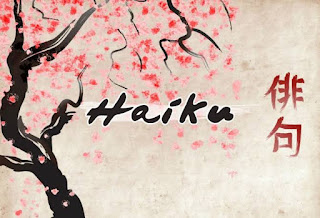Haiku Rush

I write, erase, rewrite Erase again, and then A poppy blooms. Novelty and innovation are the crux of today’s generation and so is the introduction of the term Haiku, because when no one can hear, words find meaning here. This is a beautiful modernism in the writing industry, encouraging and fostering the upcoming poets to put forth their talent and work. What is Haiku? Haiku (hokku), is a Japanese verse of three unrhymed lines of five, seven and five syllables. The concept of Haiku started off in the thirteenth century. Earlier it used to be of hundred stanzas, however due to evolution and passage of time it broke away and was made shorter. Renga, an oral poem was converted into a typical haiku by Matsuo Basho, An old pond ...
